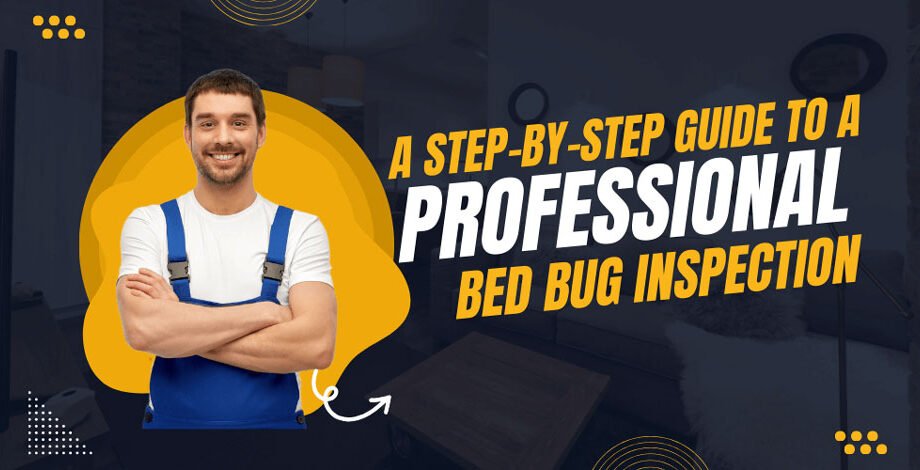Imagine the sinking feeling of waking up to itchy welts and spotting tiny, unwelcome guests in your bedroom—the dreaded bed bugs! This familiar situation emphasizes the importance of quickly seeking a professional bed bug inspection for peace of mind. In this guide, we’ll walk you through the pivotal steps of such an inspection. Read on to equip you with the knowledge to tackle this pest problem head-on.
Understanding Bed Bugs: Key Habits and Hiding Spots
Bed bugs are small, elusive pests that prefer to hide in dark, secluded spaces. Common hiding spots include mattress seams, bed frames, and even behind wallpapers. Their ability to stay hidden is what makes them particularly troublesome. To detect a bed bug infestation effectively, look for the key indicators listed below.
Signs of a Bed Bug Infestation
- Blood spots on bedding
- Sweet, musty odor
- Itchy, red bites
- Exoskeletons or shed skins
- Live bed bugs or eggs
How Can You Prepare for the Inspection?
Preparing your home for a professional bed bug inspection effectively uncovers these elusive pests. By following these straightforward steps enumerated below, you can ensure a thorough inspection:
- Clear your space, particularly around potential bed bug hiding spots.
- Vacuum carpets and clean all areas of your home.
- Wash all bedding in hot water, including sheets, pillowcases, and comforters.
- Move furniture away from walls to allow inspectors to check hidden areas.
Step 1: Visual Inspection
A thorough visual examination of your premises commences a professional bed bug inspection. The inspector systematically searches common bed bug hideouts, starting with bedding where these pests are most often found. Here is a list of common hiding spots to check:
- Beds and bedding, including mattresses, box springs, and bed frames.
- Furniture such as sofas, chairs, and underneath cushions.
- Cracks found in walls, floors, and baseboards.
- Behind picture frames and wall hangings.
- Inside electrical outlets and light switches.
- Personal items like luggage, bags, and clothing.
Step 2: Canine Inspection
The second crucial step in bed bug inspection often involves the use of specially trained detection dogs. These canine inspectors possess an acute sense of smell, enabling them to identify bed bug infestations with remarkable accuracy. Utilizing these skilled four-legged detectives significantly enhances the thoroughness and efficiency of the inspection process, ensuring more accurate identification of infestations and helping to guide targeted and effective treatment strategies.
Step 3: Monitoring Devices and Traps
Monitoring devices and traps play a crucial role in the bed bug detection process, especially when other methods are inconclusive. They are vital for confirming the presence of bed bugs and capturing them for identification. To understand its effectiveness, consider the following essential aspects of its use:
- Strategic Placement: These devices are positioned where bed bugs are likely to travel or hide.
- Luring and Capturing: They attract bed bugs into an enclosed space, preventing their escape.
- Aiding Detection: These tools are particularly useful in detecting bed bugs in less prominent locations.
- Facilitating Identification: Captured bed bugs can be accurately identified, confirming infestation.
Step 4: Reviewing Findings and Evidence
The fourth step involves carefully documenting any signs of bed bugs, such as live insects, exoskeletons, or fecal spots. Such documentation is crucial for accurately assessing the extent of the infestation and formulating an effective treatment plan. It also serves as a vital record for future reference, ensuring ongoing monitoring and prevention.
Step 5: Recommendations and Treatment Options
In the final step of the bed bug inspection process, the professional inspector plays a crucial role in offering recommendations based on the findings. They provide expert advice on the most effective treatment options to address the specific infestation. Common treatments include heat treatment, chemical treatments, and sometimes a combination of both, tailored to the severity and location of the infestation.
Hiring a Professional Bed Bug Exterminator
Professional exterminators possess the knowledge, tools, and experience necessary for effective and safe bed bug eradication. Additionally, licensed experts adhere to industry standards and regulations, while experience ensures familiarity with various infestation scenarios. Here is a breakdown of the key advantages:
- Expert knowledge
- Advanced tools
- Effective treatment
- Safety
- Licensing and experience
- Peace of mind
Wrapping Up: The Path to a Bed Bug-Free Home
In conclusion, a professional bed bug inspection is a structured and effective process. It starts with a thorough visual inspection, then deploying monitoring devices and traps, reviewing findings and evidence, and finally, receiving expert recommendations. Early detection through these professional methods is crucial for effective treatment and control of bed bugs.
Lastly, should you suspect a bed bug infestation in your home, taking immediate action is crucial. Seeking professional bed bug inspection in Arlington Heights is your first step towards ensuring a safe and comfortable living environment. Contact a professional today to safeguard your living space!

